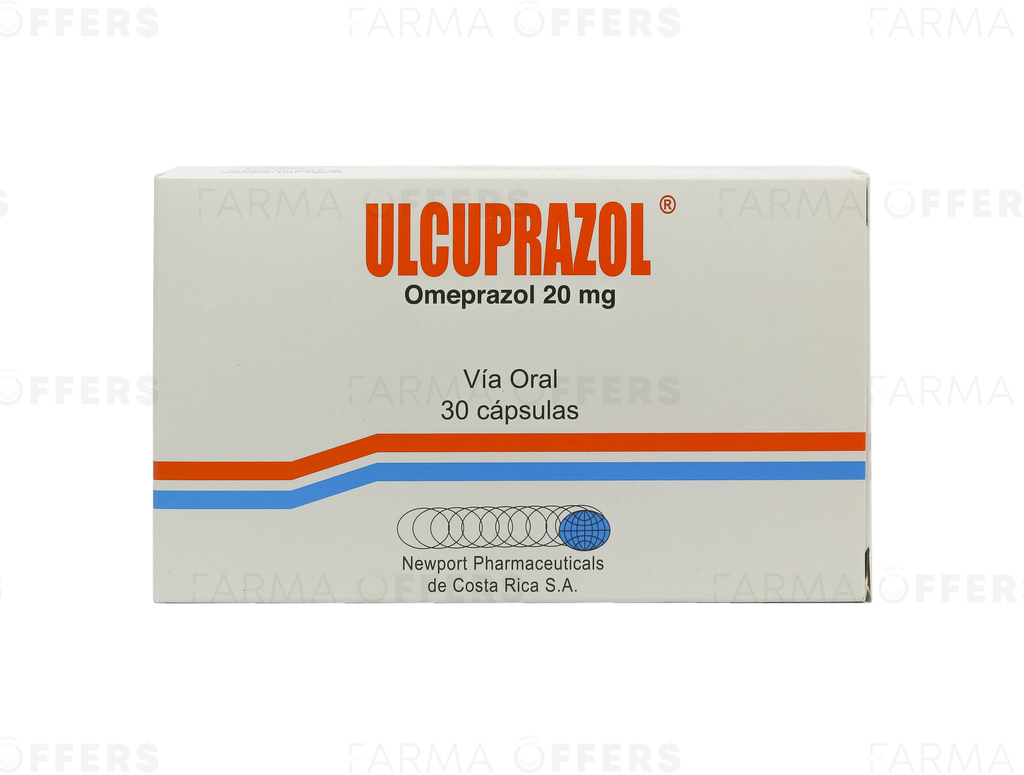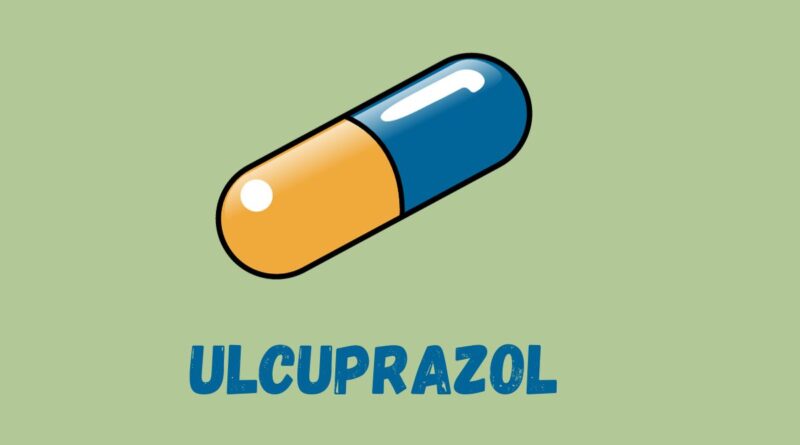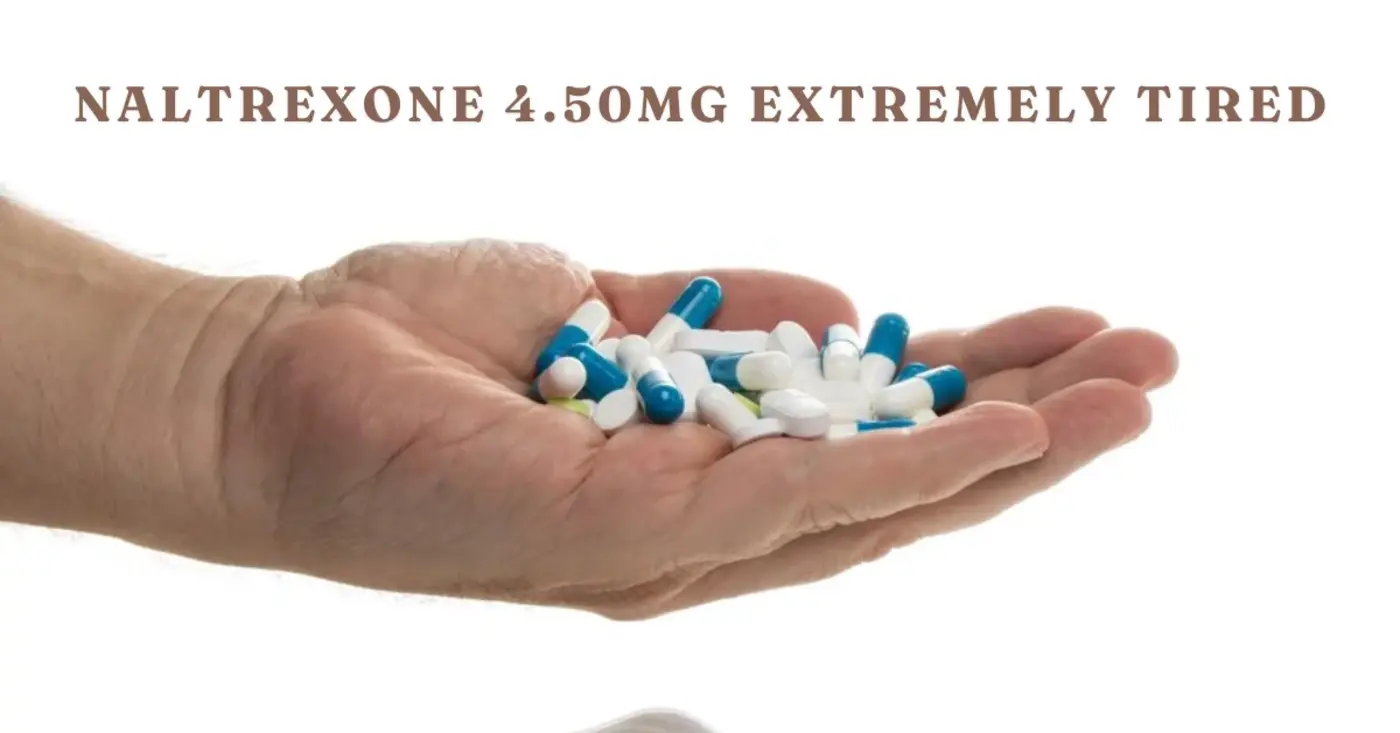Health
Ulcuprazol: Unveiling the Marvel of Modern Medicine
Published
4 months agoon
By
admin
In the ever-evolving landscape of modern medicine, Ulcuprazol emerges as a beacon of hope for individuals grappling with gastrointestinal disorders. This groundbreaking medication, known for its remarkable efficacy and safety profile, has revolutionized the treatment of conditions such as gastroesophageal reflux disease (GERD) and gastric ulcers.
Beyond its primary uses, Ulcuprazol’s innovative mechanism of action offers a glimpse into the future of acid management therapies, promising enhanced patient outcomes and quality of life. As we delve into the marvels of Ulcuprazol, join us on a journey to uncover the science behind its success, the profound impact it has on those it treats, and the bright horizon of its potential in the realm of healthcare.
Understanding Ulcuprazol: Mechanism of Action and Pharmacokinetics
Ulcuprazol stands out in the pharmaceutical world for its targeted approach in treating acid-related gastrointestinal conditions. At its core, Ulcuprazol functions by selectively inhibiting the proton pump—a crucial enzyme located in the stomach’s parietal cells. This enzyme plays a vital role in the final step of acid production, and its inhibition by Ulcuprazol results in a significant decrease in gastric acid secretion. This mechanism not only provides relief from symptoms associated with excessive acid production but also facilitates the healing process of gastric and duodenal ulcers.
The pharmacokinetics of Ulcuprazol, or the journey it takes through the body, further highlights its efficiency. Once ingested, Ulcuprazol is absorbed into the bloodstream, reaching peak plasma concentrations within 1 to 2 hours. Its bioavailability remains unaffected by food intake, making it a versatile option for patients. Metabolized primarily in the liver, Ulcuprazol’s breakdown products are excreted through both urine and feces, demonstrating a balanced elimination pathway that minimizes stress on any single organ system.
What sets Ulcuprazol apart from other acid-suppressing medications is its prolonged duration of action. By binding irreversibly to the proton pump, it ensures an extended period of acid suppression with a single daily dose. This attribute not only enhances patient compliance but also provides consistent symptom relief and healing environment for the affected gastrointestinal tissue.
The pharmacokinetics of Ulcuprazol contribute to its distinguished safety profile. With a half-life conducive to once-daily dosing and minimal interaction with other medications, it presents a lower risk of adverse effects compared to other treatments. Moreover, its specific action at the site of acid production means that it does not interfere with the absorption of nutrients, a common concern with other acid reducers.
In summary, the effectiveness of Ulcuprazol as a treatment for acid-related disorders lies in its unique mechanism of action and favorable pharmacokinetic profile. By directly targeting the source of acid production with precision and maintaining a steady therapeutic effect, Ulcuprazol offers a promising approach to managing conditions that affect millions worldwide, enhancing their quality of life and overall health outcomes.
Therapeutic Uses and Clinical Indications
Ulcuprazol has carved a niche for itself in the treatment of a wide array of gastrointestinal disorders, underscoring its versatility and effectiveness. Its primary function as a proton pump inhibitor makes it an invaluable asset in managing conditions characterized by excessive stomach acid production. Here, we explore the broad spectrum of Ulcuprazol’s therapeutic applications, demonstrating its critical role in contemporary gastroenterology.
Gastroesophageal Reflux Disease (GERD): GERD, a condition marked by the backflow of stomach acid into the esophagus, leads to symptoms such as heartburn, acid reflux, and in severe cases, damage to the esophageal lining. Ulcuprazol’s acid-suppressive properties make it a cornerstone in GERD management, offering symptomatic relief and promoting healing of erosive esophagitis.
Peptic Ulcer Disease: Ulcers in the stomach and duodenum emerge due to imbalances between digestive acids and mucosal defense mechanisms. By significantly reducing acid secretion, Ulcuprazol facilitates the healing of these ulcers, mitigating pain and preventing complications such as bleeding.
Zollinger-Ellison Syndrome: This rare condition, characterized by excessive gastric acid production due to tumors (gastrinomas), finds an effective treatment in Ulcuprazol. Its potent acid-inhibitory effect can control symptoms and prevent ulceration in affected patients.
Prevention of NSAID-Induced Gastropathy: Nonsteroidal anti-inflammatory drugs (NSAIDs) are a common cause of gastric ulcers due to their effect on mucosal defenses. Ulcuprazol is prescribed prophylactically for patients who require long-term NSAID therapy, reducing the risk of ulcer development.
Helicobacter pylori Eradication: In combination with antibiotics, Ulcuprazol is used in the treatment of H. pylori infections, a major causative factor of peptic ulcer disease. Its inclusion in therapy enhances the efficacy of antibiotic treatment by creating a less acidic environment, which is less hospitable to H. pylori.
Gastric Protection During Stress: In critically ill patients, stress-related mucosal disease can lead to significant morbidity. Ulcuprazol serves as a prophylactic measure in high-risk patients, such as those with severe trauma or undergoing major surgery, to prevent stress ulcers.
Functional Dyspepsia: Although not its primary indication, Ulcuprazol has shown benefit in managing symptoms of functional dyspepsia, including upper abdominal discomfort, nausea, and bloating, by reducing gastric acid output.
Long-term Management of Acid-related Disorders: For certain patients with chronic acid-related conditions, long-term use of Ulcuprazol may be indicated under careful medical supervision to maintain symptom control and prevent recurrence.
Benefits and Efficacy
Ulcuprazol has transformed the approach to managing acid-related gastrointestinal disorders, providing substantial benefits and proving its efficacy across a range of conditions. Its advantages extend beyond mere symptom relief, offering patients an improved quality of life and long-term wellness. This section delves into the myriad benefits of Ulcuprazol, highlighting its effectiveness as a modern medical marvel.
Rapid Symptom Relief: One of the most immediate benefits of Ulcuprazol is its ability to quickly alleviate symptoms associated with excess stomach acid, such as heartburn, acid reflux, and indigestion. Patients often report significant symptom relief within the first few days of treatment, contributing to a marked improvement in their daily lives.
Effective Healing of Ulcers: Ulcuprazol’s potent acid-suppression mechanism promotes the healing of gastric and duodenal ulcers. By reducing the corrosive effects of stomach acid on the gastrointestinal lining, it facilitates faster healing rates and reduces the risk of ulcer complications, such as bleeding.
Prevention of Recurrence: In addition to treating existing conditions, Ulcuprazol is effective in preventing the recurrence of ulcers and other acid-related disorders. Its long-term use under medical supervision helps maintain a healthy gastric environment, significantly reducing the likelihood of future episodes.
Improved Treatment Outcomes in GERD: For patients suffering from GERD, Ulcuprazol offers not only symptomatic relief but also protection of the esophageal lining from acid damage. This can prevent the progression of the disease to more severe forms, such as erosive esophagitis, and reduce the risk of complications like Barrett’s esophagus.
Enhanced Quality of Life: The comprehensive benefits of Ulcuprazol extend to an overall enhancement in the quality of life for patients. By effectively managing gastrointestinal symptoms, it allows individuals to engage more fully in daily activities and enjoy meals without the discomfort and anxiety associated with acid-related disorders.
Safety and Tolerability: Ulcuprazol is generally well-tolerated by most patients, with a safety profile that supports its use even in long-term therapy for chronic conditions. The incidence of serious side effects is low, making it a suitable option for a wide range of patients, including those with complex health profiles.
Versatility in Treatment Regimens: The efficacy of Ulcuprazol across different gastrointestinal conditions makes it a versatile tool in the clinician’s arsenal. Whether used as a standalone therapy or in combination with other medications, such as antibiotics for H. pylori eradication, Ulcuprazol adapts to the needs of diverse patient populations.
Contribution to Comprehensive Care: Beyond its primary indications, Ulcuprazol plays a critical role in the comprehensive care of patients with gastrointestinal disorders. It aids in the management of symptoms, promotes healing, and works in concert with other treatments to address the underlying causes of disease, offering a holistic approach to patient care.
Dosage, Administration, and Safety Precautions
Navigating the use of Ulcuprazol for treating acid-related gastrointestinal disorders requires an understanding of its dosage, proper administration, and adherence to safety precautions. This meticulous approach ensures maximized therapeutic benefits while minimizing potential risks. Here’s a detailed exploration of how to effectively utilize Ulcuprazol, ensuring it serves as a safe and potent remedy for those in need.
Recommended Dosage: The dosage of Ulcuprazol typically varies based on the condition being treated, the severity of symptoms, and individual patient factors such as age and coexisting medical conditions. For most adults, the standard dosage for managing GERD or peptic ulcer disease ranges from a low daily dose, with adjustments made based on therapeutic response and clinical judgment. In more severe cases, such as Zollinger-Ellison Syndrome, higher doses may be necessary. It’s crucial for patients to follow their healthcare provider’s dosage recommendations precisely.

Administration Guidelines: Ulcuprazol should be taken once daily, preferably in the morning before eating. The medication can be taken with or without food, but consistent timing with respect to meals helps maintain stable drug levels in the bloodstream. Ulcuprazol tablets should be swallowed whole, not crushed, chewed, or split, to preserve the integrity of the drug release mechanism. For patients who have difficulty swallowing tablets, alternative formulations or methods of administration should be discussed with a healthcare provider.
Safety Precautions: While Ulcuprazol is safe for most patients, certain precautions should be observed to avoid adverse effects and ensure effective treatment:
- Allergies: Patients with known hypersensitivity to Ulcuprazol or related medications should not take the drug.
- Pregnancy and Breastfeeding: Ulcuprazol should be used during pregnancy only if absolutely necessary, under the guidance of a healthcare provider. Nursing mothers should discuss potential risks and benefits with their doctor.
- Long-term Use: Prolonged use of proton pump inhibitors, including Ulcuprazol, has been associated with increased risks of certain health conditions. Long-term users should be monitored for vitamin B12 deficiency, magnesium levels, and bone health.
- Drug Interactions: Ulcuprazol can interact with other medications, altering their efficacy or increasing the risk of adverse effects. Patients should inform their healthcare provider of all medications they are taking, including over-the-counter drugs and herbal supplements.
- Medical Conditions: Individuals with liver disease or other significant health issues should use Ulcuprazol with caution, as adjustments in dosage or additional monitoring may be required.
Patient Education: Educating patients on the correct use of Ulcuprazol is paramount. This includes understanding when and how to take the medication, recognizing potential side effects, and knowing when to seek medical attention. Encouraging open communication between patients and healthcare providers fosters a collaborative approach to treatment, enhancing safety and efficacy.
In summary, the appropriate use of Ulcuprazol involves a comprehensive understanding of its dosage, administration, and the precautions necessary to safeguard patient health. By adhering to these guidelines, patients and healthcare providers can effectively harness the benefits of Ulcuprazol, ensuring it acts as a pivotal component in the management of acid-related gastrointestinal disorders.
Potential Side Effects and How to Manage Them
While Ulcuprazol is renowned for its efficacy in treating acid-related gastrointestinal disorders, like all medications, it comes with the potential for side effects. The majority of these are mild and transient, but being informed about them and knowing how to manage any that arise is key to maintaining comfort and continuing successful treatment. This section provides a comprehensive overview of the potential side effects associated with Ulcuprazol and offers guidance on managing them effectively.
Common Side Effects: The most frequently reported side effects of Ulcuprazol are generally mild and include symptoms such as headache, nausea, diarrhea, abdominal pain, and constipation. These are usually temporary and often resolve as the body adjusts to the medication. For mild gastrointestinal discomfort, patients are advised to stay hydrated and eat small, bland meals throughout the day.
Infrequent Side Effects: Less common side effects may include dizziness, sleep disturbances, and a rash. While these are not typically severe, they can be bothersome. Maintaining a regular sleep schedule and avoiding known allergens or irritants can help minimize these effects. If a rash develops, contacting a healthcare provider is important to rule out any allergic reaction.
Rare but Serious Side Effects: Although rare, there are serious side effects associated with long-term or high-dose use of Ulcuprazol, such as:
- Vitamin B12 Deficiency: Long-term use can decrease stomach acid production to a level that interferes with the absorption of vitamin B12, leading to deficiency. Patients are advised to monitor their vitamin B12 levels and consider supplementation if necessary.
- Magnesium Deficiency: Chronic use may also lead to low serum magnesium levels, which can be serious if left untreated. Regular monitoring and dietary magnesium supplementation may be recommended.
- Increased Risk of Bone Fractures: There is an associated risk of bone fractures with long-term, high-dose use, likely due to changes in calcium absorption. Maintaining a healthy diet rich in calcium and vitamin D, along with regular exercise, can help mitigate this risk.
- Clostridium difficile Infection: Proton pump inhibitors, including Ulcuprazol, can alter the gut microbiome, potentially increasing the risk of C. difficile infection in predisposed individuals. Practicing good hygiene and seeking prompt treatment for diarrhea and abdominal pain is crucial.
Managing Side Effects: For most side effects, the best approach is prevention and symptom management:
- Stay Informed: Understanding potential side effects can help patients and caregivers recognize them early and take appropriate action.
- Lifestyle Adjustments: Simple changes, such as dietary modifications, adequate hydration, and regular physical activity, can alleviate or prevent discomfort.
- Regular Monitoring: Especially for long-term users, regular check-ups and lab tests can detect and address deficiencies or complications early.
- Open Communication with Healthcare Providers: Reporting side effects to healthcare providers ensures that any necessary adjustments to treatment can be made, enhancing both safety and effectiveness.
Interactions with Other Medications and Dietary Considerations
Navigating the landscape of medication management includes understanding how Ulcuprazol interacts with other drugs and the importance of dietary considerations while on treatment. This section delves into the crucial aspects of drug interactions and dietary advice for patients taking Ulcuprazol, ensuring a holistic approach to treatment and minimizing the risk of adverse effects.
Understanding Drug Interactions:
Ulcuprazol, like any medication, has the potential to interact with other drugs, which can alter its effectiveness or increase the risk of side effects. Awareness and management of these interactions are vital for maintaining the therapeutic integrity of Ulcuprazol and safeguarding patient health.
- Impact on Absorption of Other Drugs: Ulcuprazol’s mechanism of action reduces stomach acidity, which can affect the absorption of certain medications that require an acidic environment for optimal absorption. Examples include certain antifungal drugs (e.g., ketoconazole), iron supplements, and some forms of calcium.
- Interference with Drug Metabolism: Ulcuprazol is metabolized in the liver by the cytochrome P450 system, which it shares with numerous other drugs. While Ulcuprazol generally has a low potential for liver-based interactions, it’s essential to monitor combinations with other medications metabolized through the same pathway, such as warfarin, to avoid alterations in drug levels.
- Alterations in Drug Efficacy: Certain medications, when taken with Ulcuprazol, may see a change in their effectiveness. This includes drugs like clopidogrel, where concurrent use with Ulcuprazol may necessitate adjustments in dosing or careful monitoring.
Dietary Considerations:
While on Ulcuprazol, paying attention to one’s diet can enhance the medication’s effectiveness and contribute to overall gastrointestinal health.
- Balanced Nutrition: A well-balanced diet that includes a variety of foods from all food groups can help mitigate any nutritional deficiencies that might arise from long-term use of Ulcuprazol, such as in the absorption of vitamin B12, magnesium, and calcium.
- Avoiding Trigger Foods: Individuals taking Ulcuprazol for GERD or other acid-related disorders might benefit from avoiding foods that can exacerbate their symptoms, such as spicy foods, citrus fruits, chocolate, and high-fat foods.
- Alcohol and Caffeine: Moderation is key when it comes to alcohol and caffeine consumption, as both can increase stomach acid production and potentially counteract the benefits of Ulcuprazol.
- Staying Hydrated: Adequate hydration is essential, especially for those experiencing mild side effects such as diarrhea or constipation. Water, herbal teas, and electrolyte solutions can be beneficial.
Managing Medication Interactions:
- Comprehensive Medication Review: Before starting Ulcuprazol, patients should have a comprehensive review of all medications they are taking, including over-the-counter drugs and supplements, to identify potential interactions.
- Monitoring and Adjustments: Regular monitoring by a healthcare provider, including blood tests and clinical assessments, can help identify and manage any drug interactions early. Adjustments to medication regimens may be necessary to ensure the best therapeutic outcomes.
- Open Communication: Patients should feel empowered to discuss any concerns or changes in their medication regimen with their healthcare provider. Keeping an updated list of all medications and supplements taken and sharing this information during medical visits promotes a safer treatment journey.
Cost, Accessibility, and Selecting the Right Brand
The considerations of cost, accessibility, and choosing the appropriate brand of Ulcuprazol are crucial for patients requiring this medication for managing acid-related gastrointestinal disorders. This section explores the financial aspects, availability issues, and factors influencing the choice between generic and brand-name Ulcuprazol, ensuring patients can make informed decisions regarding their treatment.
Understanding the Cost:
The cost of Ulcuprazol can vary significantly depending on several factors, including geographical location, insurance coverage, and whether a patient opts for the brand-name drug or a generic equivalent. While the efficacy of Ulcuprazol in treating conditions like GERD, peptic ulcers, and other acid-related issues is well-documented, the financial burden can be a concern for some patients.
- Insurance Coverage: Many insurance plans cover Ulcuprazol, but the extent of coverage and out-of-pocket costs can vary. Patients are advised to consult with their insurance provider to understand their coverage details, including co-pays and deductibles.
- Generic vs. Brand-Name: Generic versions of Ulcuprazol are often available at a lower cost than their brand-name counterparts. These generics contain the same active ingredients and are held to the same regulatory standards for quality and efficacy as the brand-name drugs.
Navigating Accessibility:
Accessibility to Ulcuprazol can be influenced by factors such as local pharmacy stock, regional availability, and healthcare policies. Ensuring continuous access is essential for the effective management of acid-related gastrointestinal disorders.
- Pharmacy Options: Exploring different pharmacies, including online options, can help patients find the best prices and ensure consistent access to Ulcuprazol.
- International Availability: In some regions, Ulcuprazol may be more readily available or offered at a different price point. Patients traveling or living abroad should research their options and plan accordingly.
Selecting the Right Brand or Generic:
Choosing between a brand-name Ulcuprazol and its generic equivalents involves considering both the financial aspects and the patient’s clinical response to the medication.
- Efficacy and Tolerance: While generics are bioequivalent to brand-name drugs, individual patient responses can vary. If a patient responds well to a particular brand, it may be worth the extra cost to stick with it, assuming financial feasibility.
- Consultation with Healthcare Providers: It’s crucial to discuss the options with a healthcare provider who can provide guidance based on the patient’s medical history, response to treatment, and financial situation.
- Research and Patient Assistance Programs: Some manufacturers offer patient assistance programs that can reduce the cost for those who qualify. Researching these options and discussing them with a healthcare provider can provide additional avenues for cost savings.
Looking Ahead: Future Trends in Ulcuprazol Research and Developments
The landscape of gastrointestinal treatment is ever-evolving, with Ulcuprazol at the forefront of innovation in managing acid-related disorders. As we look toward the future, several trends in research and development are set to expand the utility of Ulcuprazol, potentially introducing new therapeutic applications and improving patient outcomes. This section explores the exciting advancements and future prospects in the realm of Ulcuprazol treatment.
Innovative Formulations:
Research into new formulations of Ulcuprazol aims to enhance its efficacy, reduce side effects, and improve patient compliance. Extended-release versions could offer more consistent symptom control with fewer doses, while formulations targeted to specific sites within the gastrointestinal tract might reduce systemic exposure and associated risks.
Combination Therapies:
Combining Ulcuprazol with other medications presents a promising avenue for enhancing treatment effectiveness, particularly in complex disorders like Helicobacter pylori infection and Zollinger-Ellison syndrome. Future studies will likely focus on identifying synergistic combinations that can offer superior outcomes, including faster healing rates and improved symptom management.
Personalized Medicine:
The field of personalized medicine is gaining traction across all areas of healthcare, including the treatment of acid-related gastrointestinal conditions. Genetic profiling may soon allow healthcare providers to tailor Ulcuprazol treatment regimens based on individual patient genetics, optimizing therapeutic outcomes while minimizing the risk of adverse effects.
Expanding Indications:
Ongoing research into the pathophysiology of gastrointestinal diseases continues to uncover new potential therapeutic targets for Ulcuprazol. Conditions such as Barrett’s esophagus, eosinophilic esophagitis, and certain forms of dyspepsia are among those that might benefit from Ulcuprazol treatment in the future, pending further clinical investigation.
Addressing Long-term Use Concerns:
As the medical community becomes increasingly aware of the risks associated with long-term proton pump inhibitor use, future research will aim to mitigate these concerns. Strategies may include the development of safer long-term formulations, alternative dosing schedules that minimize exposure, and clearer guidelines for the duration of therapy.
Global Accessibility and Cost Reduction:
Efforts to increase the global accessibility of Ulcuprazol are crucial, particularly in low- and middle-income countries where the burden of gastrointestinal diseases is high. Future initiatives may focus on reducing the cost of medication through generic drug production, negotiating lower prices, and implementing global health programs to ensure all patients have access to this essential treatment.
Harnessing Digital Health Technologies:
The integration of digital health technologies, such as telemedicine and mobile health apps, into the management of acid-related disorders offers a promising complement to Ulcuprazol therapy. These tools can enhance patient education, improve adherence to treatment plans, and provide real-time monitoring of symptoms and side effects.
Conclusion
In the dynamic landscape of medical science, Ulcuprazol represents a pivotal advancement in the treatment of acid-related gastrointestinal disorders, offering hope and relief to countless individuals. Through its comprehensive exploration—from its potent mechanism of action and diverse therapeutic applications to the careful considerations surrounding dosage, side effects, and drug interactions—we’ve unveiled the multifaceted nature of this medication.
As we look forward to innovative research, improved formulations, and expanded accessibility, the potential of Ulcuprazol continues to grow. It’s clear that with ongoing advancements and a patient-centered approach, Ulcuprazol will remain at the forefront of gastrointestinal treatment, improving the quality of life for patients around the globe. The journey of Ulcuprazol, from its current applications to its future prospects, encapsulates the essence of modern medicine’s quest to provide effective, safe, and accessible solutions for complex health challenges.
FAQs
1. What is Ulcuprazol and how does it work?
Ulcuprazol is a medication used to treat acid-related gastrointestinal disorders. It works by inhibiting the proton pump, an enzyme in the stomach’s lining responsible for acid production. This action reduces stomach acid, alleviating symptoms of conditions like gastroesophageal reflux disease (GERD), peptic ulcers, and Zollinger-Ellison syndrome.
2. What are the common side effects of taking Ulcuprazol?
Common side effects of Ulcuprazol include headache, nausea, diarrhea, abdominal pain, and constipation. These are generally mild and tend to resolve as the body adjusts to the medication. However, long-term use may lead to more serious side effects such as vitamin B12 and magnesium deficiencies, and an increased risk of bone fractures.
3. Can Ulcuprazol be taken alongside other medications?
While Ulcuprazol is safe to use with many medications, it can interact with certain drugs, altering their effectiveness or increasing the risk of adverse effects. Notably, it may affect the absorption of medications that require an acidic environment and interact with drugs metabolized through the liver. Patients should consult their healthcare provider about all medications they are taking to avoid potential interactions.
4. Are there any dietary considerations while taking Ulcuprazol?
Patients taking Ulcuprazol should maintain a balanced diet to counteract potential nutrient deficiencies. It may also be beneficial to avoid foods that exacerbate acid-related symptoms, such as spicy foods, citrus fruits, and high-fat foods. Moderation in alcohol and caffeine consumption is advised, as these can increase stomach acid production.
5. What future developments can be expected for Ulcuprazol?
Future research on Ulcuprazol is focusing on innovative formulations for enhanced efficacy and reduced side effects, combination therapies for more complex conditions, and personalized medicine approaches for tailored treatment regimens. Efforts are also underway to improve global accessibility and reduce the cost of the medication, ensuring it remains a key component in the treatment of gastrointestinal disorders worldwide.
You may like
Health
Smoothie CCL: A delicious and nutritious trend
Published
3 days agoon
July 24, 2024By
admin
Smoothie CCL (Colorful, Creamy, Layered) has taken the health and wellness world by storm. These vibrant, layered drinks are not only visually appealing; They offer a variety of health benefits and creative possibilities and have become a staple in the diets of many people around the world. Let’s explore what makes the CCL shake a sensation and how you can create your own shake at home.
What is CCL shake?
Smoothie CCL is characterized by its different layers of color and texture. Unlike traditional smoothies, which are typically made in a single, uniform blend, Smoothie CCL carefully layers different smoothie blends to create a visually striking and deliciously varied drink. Each layer not only imparts a different flavor and texture, but also provides unique nutritional benefits.
The art of creating CCL smoothies
Creating a CCL shake is like painting a picture; It requires careful selection and preparation of ingredients to achieve the perfect balance of color, flavor and texture.
Choose vibrant ingredients: Start with a variety of colorful fruits and vegetables. For example, use spinach or kale for green layers, berries for red and purple layers, and mango or pineapple for yellow layers.
Create Creamy Layers: Add ingredients like Greek yogurt, nut butter, or avocado to add creaminess to your smoothie. These ingredients also provide healthy fats and protein, making your smoothie more filling.
Layering technique: To achieve different layers, mix each component individually. Slowly pour each layer over the back of a spoon to prevent mixing and ensure clean separation of colors.
Experiment with textures: Add different textures to your smoothie by adding seeds, nuts, or granola between layers. This not only makes your smoothie more interesting, but also increases the nutritional value.
Health Benefits of CCL Shake
CCL for smoothies are packed with vitamins, minerals and antioxidants from various fruits and vegetables. Below are some health benefits associated with popular ingredients:
Leafy greens: Spinach and kale are rich in vitamins A, C, and K, as well as minerals such as iron and calcium. This green boosts immunity and promotes healthy bones.
Berries: Strawberries, blueberries, and raspberries are rich in antioxidants that support heart health and reduce inflammation.
Healthy Fats: Avocado and nut butters provide a dose of healthy fats that are essential for brain health and feeling fuller longer.
Protein: Greek yogurt and chia seeds provide protein, which is crucial for muscle repair and overall energy.
CCL shake in popular culture
Smoothie CCL has found its place not only in the health food community, but also in pop culture. He appears in social media trends, with Instagram and Pinterest users sharing his colorful creations. The drink’s popularity is also boosted by its frequent appearances in media, including K-dramas, where characters are often seen enjoying these vibrant beverages.
Make your own CCL shake
Here’s a simple recipe to get you started:
Ingredients:
1 cup of almond milk
1 banana
1/2 cup frozen strawberries
1/2 cup spinach
1 tablespoon honey
1 teaspoon chia seeds
Instructions:
Mix each layer of ingredients individually. For example, mix spinach with half the almond milk for the green layer and strawberries with the rest of the almond milk for the red layer.
Slowly pour each layer over the back of a spoon into a glass to form distinct layers.
Top with chia seeds and a drizzle of honey.
Let your creativity fly with the ingredients. Try adding tropical fruits like mango and pineapple for a sunny, yellow coating, or mix in some Greek yogurt for extra creaminess.
Innovative trends in Smoothie CCL
The future for Smoothie CCL looks bright, with continued innovation in flavors and ingredients. Trends to watch out for include:
Superfood additives: Ingredients such as spirulina, maca powder and turmeric.
Functional Drinks: Shakes specifically designed for health, such as: B. strengthening the immune system or improving digestion.
Sustainable Practices: Use local and organic ingredients to make smoothies that are more environmentally friendly.
CCL smoothie and technology
Technology plays an important role in the development of Smoothie CCL. Apps and websites offer a wealth of recipes and nutritional information, while smart blenders ensure the perfect consistency every time. Social media platforms like Instagram and Pinterest have become platforms for sharing smoothie creations, further increasing their popularity.
Diploma
Smoothie CCL is more than just a drink; It is a lifestyle. Its appeal lies in its versatility, health benefits and cultural significance. Whether you’re a health enthusiast, a pop culture fan, or someone looking for a delicious and nutritious drink, Smoothie CCL has something to offer. Embrace the trend, experiment with flavors and enjoy the refreshing experience of this colorful, creamy, multi-layered delight.
Frequent questions
What makes Smoothie CCL different from conventional smoothies?
Distinguished by its vibrant layers of color and texture, Smoothie CCL offers visual appeal and flavor variety in a single glass.
How often should I drink smoothies?
There is no specific frequency, but consuming a shake with different ingredients every day can help provide the nutrients needed for an active lifestyle.
Are there any ingredients I should avoid in my smoothies?
It is best to limit added sugar and artificial sweeteners. Opt for natural sweets like fruit and a spoonful of honey, and avoid high-calorie ingredients like nut butter and coconut oil.
How can I make my smoothies more filling?
Add protein and fiber-rich ingredients like Greek yogurt, silken tofu, oats, chia seeds, and flax seeds. The combination of fruits and vegetables also increases volume and nutritional value.
Grab your blender and start experimenting with new recipes today! Cheers to a delicious and nutritious journey with CCL Smoothie!
Health
NALTREXONE 4.50MG EXTREMELY TIRED ULTIMATE GUIDE
Published
7 days agoon
July 20, 2024By
admin
Do you feel more tired than usual while taking Naltrexone 4.50mg extremely tired? You’re not alone. Let’s examine why this medication may make you feel tired and explore some strategies to help you cope effectively.
WHAT IS NALTREXONE 4.50 MG?
If you’ve heard of Naltrexone 4.50mg extremely tired and are curious to learn more, you’ve come to the right place! This medication belongs to a class of medications known as opioid antagonists. It blocks the effects of opioids on the brain, thereby reducing cravings and helping people avoid addictive behaviors.
Naltrexone 4.50mg extremely tired is often prescribed to treat alcohol and opioid addiction. By reducing the rewarding effects of these substances, you can help the individual on their path to sobriety.
It is important that you carefully follow your doctor’s instructions when taking Naltrexone 4.50mg extremely tired. Always take the prescribed dose at the recommended times to maximize effectiveness.
Please note that Naltrexone 4.50mg extremely tired may not be suitable for everyone. Therefore, it is important that you talk to your doctor about any existing medical conditions or medications before starting this treatment.
How does it work?
Naltrexone 4.50 mg extremely tired drowsy works by blocking the effects of opioids on the brain. When someone takes opioid medications or consumes alcohol, these substances bind to certain receptors in the brain, causing sensations of pleasure and reducing the perception of pain. Naltrexone binds to the same receptors but does not activate them, essentially acting as a blocker.
By blocking these receptors, Naltrexone 4.50mg extremely tired helps reduce cravings for opioids and alcohol. This can be especially beneficial for people recovering from addiction, as it reduces the rewarding effects of these substances. Additionally, naltrexone may also help regulate the release of certain neurotransmitters involved in mood regulation.
Naltrexone 4.50mg in extremely tired people plays a crucial role in overcoming addiction by altering the brain’s response to opioids and alcohol. It is important that you carefully follow your doctor’s instructions when using this medication to maximize its effectiveness.
Common uses of naltrexone 4.50mg
Naltrexone 4.50 mg extremely tired is often used to treat alcohol and opioid addiction. It helps reduce cravings for these substances, making it easier to avoid them. This medication blocks the effects of opioids on the brain, which helps prevent relapses in those recovering from addiction.
In addition to treating addiction, Naltrexone 4.50mg extremely tired of naltrexone has also been shown to be effective in treating certain chronic pain conditions. It can help relieve pain symptoms by modulating the body’s response to pain signals.
Additionally, some healthcare providers may prescribe Naltrexone 4.50mg extremely tired off-label for other conditions, such as impulse control disorders and certain autoimmune diseases. The potential benefits of this medication for various health problems beyond its approved uses are currently being investigated.
It is important to consult a doctor before starting to take Naltrexone 4.50 mg to ensure that it is appropriate and safe for your specific needs and health condition.
Side effects and precautions.
When taking , it is important to know the possible side effects and precautions. Some common side effects may include nausea, headache, dizziness, or tiredness. These symptoms are usually mild and temporary, but should be monitored closely.
In some cases, more serious side effects may occur, such as allergic reactions or liver problems. If you experience any unusual symptoms while taking Naltrexone 4.50mg extremely tired, it is important to seek medical attention immediately.
Caution should also be taken when combining naltrexone with other medications or substances. It is important to consult a doctor before taking this medication to make sure there are no interactions that could cause harm.
Additionally, pregnant women or people with certain medical conditions should use caution when using naltrexone 4.50 mg. Always follow your doctor’s recommendations and never adjust the dosage without proper guidance.
Tips for managing fatigue while taking 4.50 mg of naltrexone
Fatigue when taking Naltrexone 4.50mg extremely tired of naltrexone is a common problem for many people. Dealing with this fatigue can be challenging, but there are some tips that can help alleviate these symptoms. Maintaining a healthy lifestyle is crucial. This includes getting enough sleep every night, drinking enough fluids, and eating a balanced diet.
Incorporating regular exercise into your daily routine can also increase energy levels and reduce feelings of fatigue. Even light physical activity like walking or yoga can make a difference. Additionally, stress-reducing techniques, such as meditation or breathing exercises, can help combat fatigue.
If you experience severe fatigue while taking naltrexone 4.50 mg, it is important to contact your doctor as they may be able to adjust your dose or recommend alternative treatment options. Remember that everyone’s body reacts differently to medications. Therefore, it is important to find what works best for you to effectively manage fatigue while taking 4.50 mg of naltrexone.
Other potential benefits of Naltrexone 4.50 mg
Naltrexone 4.50mg extremely tired widely known for its role in the treatment of alcohol and opioid addiction, has shown promise in providing additional benefits beyond its primary uses. Some studies suggest that naltrexone may help people with certain autoimmune diseases by modulating the immune response.
Additionally, there is new research suggesting that naltrexone may help reduce inflammation and improve overall immune function. This dual action of attacking both addictive behavior and inflammatory responses underlines the versatility of this drug.
Additionally, some researchers have studied the use of Naltrexone 4.50mg extremely tired in the treatment of certain mental disorders such as depression and anxiety. Although more research is needed to fully understand these potential benefits, it opens up exciting possibilities for expanding the therapeutic uses of naltrexone.
Although naltrexone is primarily known for its effectiveness in treating addiction, additional potential benefits suggest a broader range of medical uses that merit further investigation.
Conclusion: Is Naltrexone 4.50 mg the right choice for you?
So, is Naltrexone 4.50 mg extremely tired the right choice for you? As with any medication, it is important that you consult with your doctor before starting a new treatment plan. While Naltrexone 4.50 mg may be effective in treating certain conditions, such as alcohol or opioid addiction and chronic pain, it may not be suitable for everyone.
If you experience extreme tiredness or fatigue while taking Naltrexone 4.50 mg, do not hesitate to discuss this with your doctor. They may be able to give you advice on how to manage these side effects or adjust your dose if necessary.
Remember that each person reacts differently to medications. So what works for one person may not work for another. Your doctor will consider your individual medical history and symptoms when deciding if naltrexone 4.50 mg is the right choice for you.
Stay informed, be proactive about your health, and work with your healthcare team to make the best naltrexone 4.50 mg for extremely tired decision based on what is most beneficial and safe for you.
Frequent questions
What is “Naltrexone 4.50 mg extremely tired”?
As a side effect, Naltrexone 4.50mg extremely tired can cause extreme fatigue. This guide explains why this happens and how to fix it.
Why does Naltrexone 4.50 mg cause fatigue?
Naltrexone 4.50mg extremely tired can interfere with neurotransmitters and cause fatigue. This is a common side effect that many users experience.
How can I manage fatigue while taking 4.50 mg of naltrexone?
Fighting fatigue includes maintaining a healthy lifestyle with adequate sleep, hydration, a balanced diet, and regular exercise. For individual advice, contact your doctor.
Are there any other side effects of Naltrexone 4.50 mg?
Yes, common side effects include nausea, headaches, dizziness, and more serious side effects such as liver problems. Always monitor your symptoms and contact your doctor.
Is it safe to adjust my naltrexone dose if I feel extremely tired?
Never adjust your dose without consulting your doctor. They can recommend the best course of action based on your symptoms and medical history.
Blog
Suwuianna: Unveiling the Mysteries of an Ancient Civilization
Published
2 weeks agoon
July 16, 2024By
robert log
Historical Context and Discovery
The civilization of Suwuianna flourished in what is now the southeastern region of the Mediterranean basin, dating back to around 3000 BCE. It was first discovered in the late 19th century by archaeologists who stumbled upon its ruins while excavating for other known civilizations. Initial findings included pottery shards, remnants of grand structures, and inscriptions in an undeciphered script, sparking curiosity and intrigue within the archaeological community.
Geographic and Environmental Factors
Suwuianna’ geographic location played a crucial role in its development. Situated near fertile river valleys and coastal plains, the region provided abundant resources for agriculture and trade. The temperate climate, coupled with rich soil and access to water, allowed the Suwuiana people to cultivate a variety of crops, supporting a stable and growing population. Additionally, the proximity to the sea facilitated maritime trade, connecting Suwuinna with other contemporary civilizations and fostering cultural exchanges.

Political and Social Structure
The political structure of Suwianna was characterized by a centralized form of government, possibly a monarchy or a theocratic state, as inferred from the grandiose palaces and temples discovered. The society appeared to be highly stratified, with a clear hierarchy of rulers, priests, artisans, and laborers. The ruling class likely held both political and religious authority, overseeing the administration, economic activities, and religious ceremonies.
The social fabric of Suwuianna was complex and multifaceted. Evidence suggests that family units were the basic social structure, with extended families living in close-knit communities. The division of labor was well-defined, with specialized roles in agriculture, craftsmanship, trade, and religious duties. This specialization contributed to the society’s overall prosperity and advancement.
Cultural and Artistic Achievements
Suwuianna’s cultural and artistic achievements are among the most fascinating aspects of the civilization. Their artistry is evident in the intricate pottery, jewelry, and sculptures unearthed from archaeological sites. The Suwuanna people were adept at working with various materials, including clay, stone, metal, and precious gems. Their craftsmanship not only served functional purposes but also had significant aesthetic and symbolic value.
One of the most remarkable artistic achievements of Suwuianna is their architectural prowess. The remains of grand palaces, temples, and public buildings showcase advanced engineering and construction techniques. The use of precise stone masonry, complex structural designs, and decorative elements like frescoes and reliefs indicates a high level of architectural sophistication. These structures served as centers of administration, worship, and social gatherings, reflecting the civilization’s cultural and religious priorities.
Language and Writing
The script of Suwuiana remains one of the most enigmatic aspects of the civilization. Inscriptions found on pottery, monuments, and artifacts suggest a complex writing system, but it has yet to be fully deciphered. The script appears to be logographic or syllabic, similar to other ancient writing systems like cuneiform or hieroglyphs. Efforts to decode the script have been ongoing, with scholars comparing it to known languages and scripts of the region in hopes of unlocking its secrets.
The inability to fully understand the Suwuianna script has posed challenges in comprehending their literature, administrative records, and religious texts. However, the visual and contextual clues provided by the inscriptions offer glimpses into their language and communication methods. It is hoped that future discoveries and advancements in deciphering techniques will shed more light on this aspect of Suuianna’s civilization.
Religion and Spirituality

Religion played a central role in the daily lives of the Suwuianna people. Archaeological evidence points to a polytheistic belief system, with a pantheon of gods and goddesses governing various aspects of life and nature. Temples dedicated to these deities were focal points of religious activity, where priests conducted rituals, sacrifices, and ceremonies to appease the gods and seek their favor.
The Suwuianna cosmology and mythology, though not fully understood due to the undeciphered script, can be partially reconstructed from artistic depictions and parallels with neighboring cultures. Themes of creation, fertility, and the afterlife appear to have been significant, with elaborate burial practices indicating a belief in an afterlife. Tombs and burial sites often contained grave goods, such as pottery, tools, and personal items, suggesting that the Suwuianna people prepared for a journey beyond death.
Economic Activities and Trade
Suwuianna’s economy was diverse and dynamic, driven by agriculture, craftsmanship, and trade. The fertile lands supported the cultivation of grains, fruits, vegetables, and livestock, providing sustenance for the population and surplus for trade. The production of goods such as pottery, textiles, and metalwork was highly developed, with artisans producing items for both domestic use and export.
Trade was a vital component of Suwuianna’s economy, facilitated by its strategic location and access to the sea. Archaeological findings indicate extensive trade networks connecting Suwuianna with other contemporary civilizations in the Mediterranean and beyond. Items such as pottery, metal tools, and luxury goods have been found in distant regions, testifying to the reach and influence of Suwuianna’s trade relationships. These interactions not only boosted the economy but also contributed to cultural exchanges and the spread of ideas.
Decline and Legacy
The decline of Suwuianna remains a topic of debate among scholars. Various factors, including environmental changes, resource depletion, internal strife, and external invasions, could have contributed to the civilization’s eventual downfall. By around 1000 BCE, evidence suggests that Suwuianna’s cities and structures were abandoned, and the civilization faded into obscurity.
Despite its decline, the legacy of Suwuianna endures. The civilization’s artistic, architectural, and cultural contributions have left a lasting impact on subsequent cultures and societies in the region. Elements of Suwuianna’s craftsmanship, architectural styles, and religious practices can be seen in later Mediterranean civilizations. Moreover, the ongoing efforts to study and understand Suwuianna continue to enrich our knowledge of ancient history and the interconnectedness of early human societies.
Modern Discoveries and Research
The study of Suwuianna is an evolving field, with new discoveries continually reshaping our understanding of this ancient civilization. Advances in technology, such as remote sensing, ground-penetrating radar, and digital imaging, have revolutionized archaeological research, enabling scholars to uncover hidden structures and artifacts without intrusive excavation. These methods have led to the identification of previously unknown sites and the reevaluation of existing ones.
Collaboration among international teams of archaeologists, linguists, historians, and scientists has also accelerated the pace of research. Multidisciplinary approaches are helping to piece together the puzzle of Suwuianna, from deciphering the script to understanding the environmental context of their settlements. The integration of scientific techniques, such as isotope analysis and radiocarbon dating, is providing more accurate timelines and insights into the daily lives of the Suwuianna people.
The Future of Suwuianna Studies
As research continues, the future of Suwuianna studies holds great promise. Each new discovery brings us closer to unraveling the mysteries of this ancient civilization and appreciating its contributions to human history. Efforts to decipher the script remain a high priority, as unlocking the language could open up a wealth of knowledge about Suwuianna’s governance, economy, religion, and daily life.
Public interest and support for archaeological research are also crucial for the continued exploration of Suwuianna. Educational programs, museum exhibitions, and media coverage can raise awareness and generate enthusiasm for this fascinating civilization. Engaging the public in the preservation and study of Suwuianna’s heritage ensures that the legacy of this ancient society is not forgotten.
Conclusion
The civilization of Suwuianna, though largely lost to the sands of time, continues to captivate and inspire. Through the diligent efforts of archaeologists and researchers, we are gradually uncovering the rich tapestry of Suwuianna’s history, culture, and achievements. From their advanced architecture and intricate artistry to their complex social structures and economic networks, Suwuianna represents a remarkable chapter in the story of human civilization.
As we delve deeper into the mysteries of Suwuianna, we gain not only a greater appreciation for this ancient society but also a broader understanding of our shared human heritage. The legacy of Suwuianna reminds us of the resilience, creativity, and interconnectedness of early human civilizations, offering valuable lessons and insights for our world today.
Trending
-

 Business7 months ago
Business7 months agoQuantity TBD on Amazon: €ководство
-

 Business3 months ago
Business3 months agoIntegremos: Weaving Together the Fabric of Connection
-

 Tech8 months ago
Tech8 months agoDesgrabador
-

 Business8 months ago
Business8 months agoGetting Started With Hqpotner
-

 News7 months ago
News7 months agoWTOV Channel 9 Revealed: The Untold Stories You Never Knew
-

 News8 months ago
News8 months agoHow To Wear Brıston
-

 Blog8 months ago
Blog8 months agoAmerican Express Work from Home Jobs
-

 News8 months ago
News8 months agoWhat Is Zeolítica?

3 Comments